Cogeneration is the joint generation of several energy vectors within the same plant. In the majority of cases, this is heat and electricity.
In reality, cogeneration consists of producing heat while part of the losses of the installation are converted into mechanical energy (itself converted into electricity). It is therefore not a full-fledged power plant.
If I have no heating needs but a lot of electrical needs, is a cogeneration unit worthwhile?
As described above, cogeneration makes it possible to produce heat and to produce electricity as a “bonus”. A cogeneration unit will therefore always be sized according to your heat needs (heating and/or domestic hot water) and the production of electricity will cover some of your needs in this area.
Therefore, a cogeneration unit is not sized to cover all your electrical needs.
In general, the buildings for which it is interesting to install a cogeneration unit are hospitals, retirement homes, municipal swimming pools, aquatic centers, etc.
Depending on your needs, there are several types of cogeneration unit (by power range):
– Micro-CHP: 0 to 36 (sometimes 50) kWelec
– Mini-CHP: 36 (sometimes 50) to 250 (sometimes 1000) kWelec
– Cogeneration: > 250 (sometimes 1000) kWelec
What fuels to produce the heat and electricity for my cogeneration ?
Cogeneration units can operate with a heat engine or a gas turbine.
The type of fuel used for small and medium power cogeneration units can be (depending on the models) natural gas (or biogas if available), rapeseed oil, fuel oil, wood or hydrogen.
For medium to high power units, the fuel type is usually natural gas and very rarely wood.
If I install a cogeneration unit, can I uninstall my boiler?
No. The boiler must be able to back up the cogeneration unit because it generally does not cover all of your heat needs.
To better understand, let’s take the thermal needs of an installation X over a year:
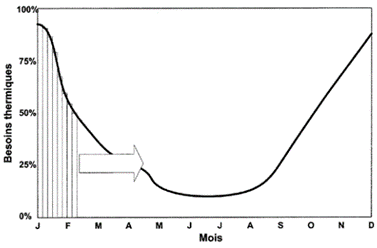
The need for heat is not the same throughout the year: the months of May, June, July and August indeed require little heat production (certainly almost exclusively for the production of domestic hot water) while the months of November, December, January and February demand a lot.
By prioritizing the needs in descending order, we obtain the monotonic thermal power:
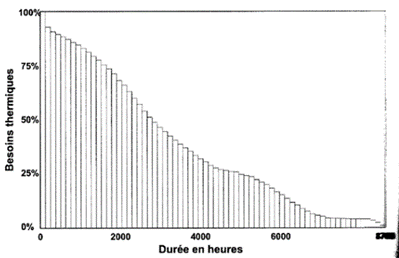
Here are some examples of monotones depending on the use of the building:
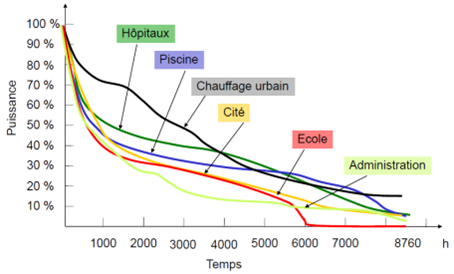
It is important to point out that a cogeneration unit should ideally operate at constant power. It certainly has a modulation capacity but the latter is quite weak. The sizing of the cogeneration unit will therefore be done in such a way as to allow it to cover a maximum volume of thermal consumption in view of its low modulation capacity.
Let’s take the example of a 150 kW cogeneration unit and plot the values on the monotone graph:
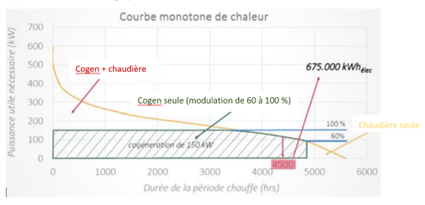
The cogeneration unit can modulate slightly but, below a certain threshold, it stops. Thus, in this example, below 60% of its power, it stops and the boiler alone ensures the load of producing the heat necessary to meet the need. Similarly, for operations above its maximum power (100% or 150 kW in this example), the boiler supplements the cogeneration unit.
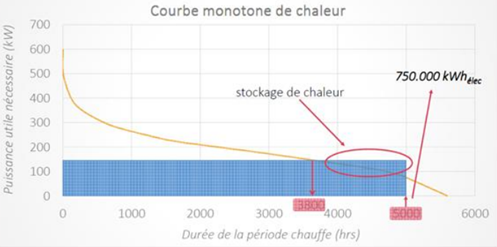
To increase its operating hours at full load and therefore the associated electricity production and avoid making too many starts/stops, a buffer tank (hot water storage tank) is sized:
Am I entitled to green certificates (CV) if I install a cogeneration unit ?
Yes, but producers who wish to benefit from green certificates must reserve them in an envelope determined by sector (photovoltaic, fossil cogeneration, wind power, hydroelectricity, etc.). The reservation is prior to the realization of your project to install a green electricity production unit.
The number of green certificates[1] to which you may be entitled and the price of the green certificate depends on the energy source of the cogeneration unit and where your project is located (Walloon or Brussels region):
– In Wallonia, vegetable oil gives the right to 1.8 green certificates in places served by natural gas and to 2 green certificates in other cases.
– In Brussels, the rate of green certificates for cogeneration using vegetable oil can exceed 3.
– Natural gas gives the right to around 0.6 green certificates in Wallonia and 1.2 green certificates in Brussels (condensing cogeneration units).
– The price of the green certificate varies between €60 and €65 in the Walloon Region and reaches €85 in the Brussels Region. A minimum redemption price is guaranteed by the Region.
More information can be found on the Walloon region website.
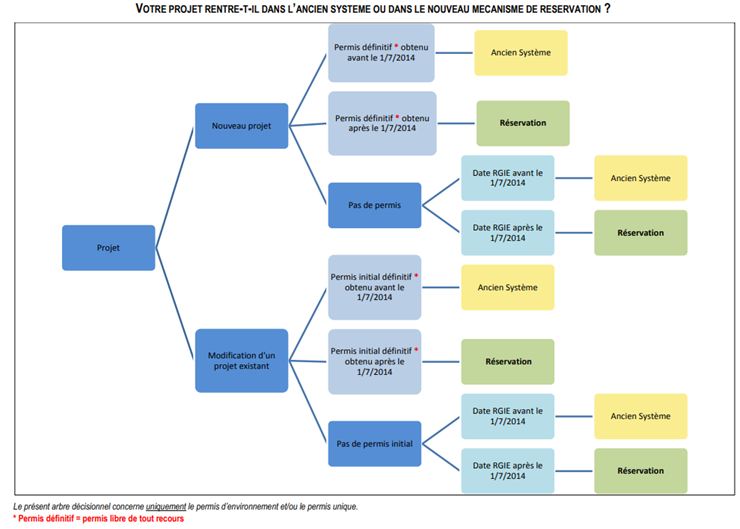
What are the advantages of a cogeneration unit ?
– The electricity produced and self-consumed is “free” because it comes from losses linked to the production of heat;
– Excess electricity is sold back to the grid (financial gain);
– The boiler is less stressed since part of the heat is produced by the cogeneration unit;
– The system saves CO2 and gives the right to green certificates (climate and financial advantage).
[1] Rentabilité | Cogengreen, consulted on August 31st 2022
